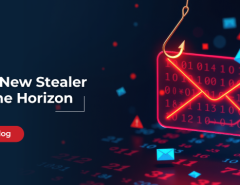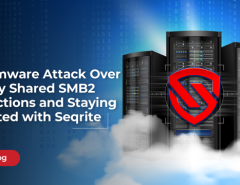Data breaches and cyber-attacks are common occurrences which usually proliferate at an exponential rate. While it is important that enterprises tighten their enclosures, it is also advisable to understand how cybercriminals prepare for a breach. Hacker surveillance is one way of identifying the operating principles associated with a cybersecurity threat. If an organization can gauge the hacker’s pathway, it becomes easier to incorporate preventive measures.
Every hacker takes a considerable amount of time to study the data subjects. Be it looking at the system specifications of the device or the existing operating system; every cybercriminal has a predefined layout when it comes to the operations. While the IP address is essential in some instances, information regarding the CRM vendor can also assist a hacker with their malicious endeavors. One such example would be the healthcare industry which is highly prone to breaches. The attackers, synonymous to the healthcare sector, leverage the PII, i.e., Personally Identifiable Information followed by the ePHI or Electronically Protected Health Information. Although HIPAA or the Health Insurance Portability and Accountability Act work towards safeguarding the confidentiality of data subjects, nothing works better than a proactive enterprise that can get inside the minds of cybercriminals.
Addressing Hacker Surveillance
It is good to keep our friends close and enemies closer. The saying holds true for cybercriminals as once we get to know the preparations, the entire process of safeguarding the business becomes simpler. Therefore, hacker surveillance is an approach where the security service provider or the concerned organization traces the trials of a hacker for assessing the pathway and associated techniques. This approach prepares organizations against future attacks and allows them to camouflage certain details, accordingly.
How Cybercriminals Go about their Business?
Prepping for a cyber-attack isn’t simple and requires a lot of effort. From a hacker’s point of view, it’s all about staying one step ahead of the targeted organizations.
1. Choosing the Victim
No breach or cyber-attack is random. It has a specific motivation leading to the same. Hackers select organizations which can pay up upon encountering threats. Intelligence gathering is, therefore, the first part of a hackers’ homework, helping them gain valuable information about the existing vulnerabilities within an organization. The dark web usually assists the hackers when it comes to gathering intelligence. Therefore, companies should cleverly encrypt the information sets for staying adrift of the malicious intentions.
2. Targeting Employees
Hackers, who rely on BEC (Business Email Compromise) scams and phishing, usually target specific employees in an organization. Most data breaches require a particular entry point to multiply, and a targeted employee can provide the same to the cybercriminal. Once a target is selected, the hackers draft specific emails to the same for gaining entry into the organizational hierarchy. Hackers usually look at the social profiles of the employees and zero in on the most vulnerable ones.
3. Understanding Customer, Partners, and Other Metrics
While tracking an organization is a part of intelligence gathering, experienced hackers often look outside the enterprise for fine-tuning their strategies. One such example would be the Target breach where the HVAC vendor was first hacked and the leaked credentials were then used for initiating the larger debacle.
Learning More About the Attack Techniques
As it is evident that hackers do a lot of homework before starting off with a plan, it is also necessary to understand the nature of attacks for staying ahead of the anomalies.
- Botnet: Once the hacker gains entry into the system, software robots carrying malware are spread far and wide into the framework.
- Fast Flux: Cybercriminals who have selected their victims first release the botnet and then keep moving the data across multiple sources to avoid detection.
- Denial of Service: This form of attack restricts customer movements within a server as hackers flood the same with fabricated traffic.
- Social Engineering: Hackers who target specific employees usually resort to this form of breach where unsuspecting users are tricked into revealing personal insights. Phishing is one such example that has plagued the cyber domain for a long time.
- Zombie Computer: Hacking into a computer and using the same against the organization falls into this category. Zombie computers are usually the botnet precursors.
- Skimmers: This approach involves devices that are specially rigged for stealing credit card and related information. While a lot of targeted research is not required for this form of hacking, cybercriminals usually conduct generic surveys for creating similar devices.
Hacker surveillance, therefore, reveals a lot about the approach used by cybercriminals for hacking confidential data of organizations. Once the modus operandi is out in the open, it becomes easier to align vulnerabilities with specific attack strategies and find solutions for safeguarding user data.
As an IT security partner for your business, Seqrite provides comprehensive endpoint security from advanced cyber threats. To know more, visit our website or




